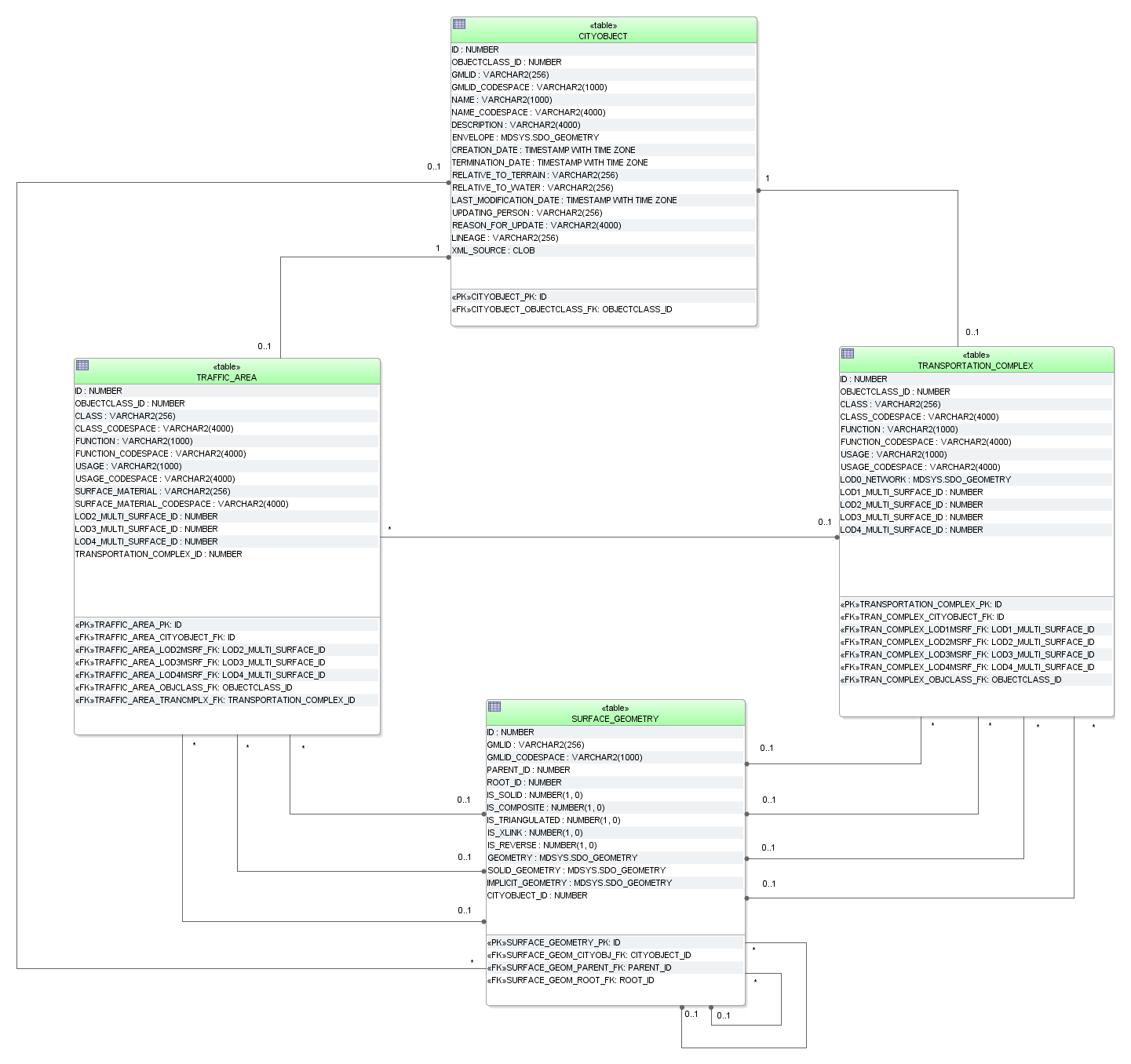3.2.11. Transportation schema¶
For the realisation of transportation objects two tables are provided: TRAFFIC_AREA and TRANSPORTATION_COMPLEX.
TRAFFIC_AREA
Next to the common attribute triple class, function and usage traffic areas can store information about their surfaceMaterial. In the UML model this attribute is specified as gml:CodeType which makes an additional _CODESPACE column necessary. The representation of geometry is handled by foreign keys LODx_MULTI_SURFACE_ID (with 2 ≤ x ≤ 4). The aggregation relation between a transportation complex and the corresponding traffic areas results from the foreign key TRANSPORTATION_COMPLEX_ID. The foreign key OBJECTCLASS_ID indicates whether a tuple represents a TrafficArea (value 47) or an AuxiliaryTrafficArea (value 48) feature. If a CityGML ADE is used that extends any of the two classes TrafficArea or AuxiliaryTrafficArea, further values for OBJECTCLASS_ID may be added by the ADE manager. Their concrete numbers depend on the ADE registration (cf. Section 5.3.4).
TRANSPORTATION_COMPLEX
As shown in the UML diagram, every traffic area object may have the attributes class, function and usage. For differentiation between the subclasses an OBJECTCLASS_ID column is used again:
- 42 (TransportationComplex)
- 43 (Track)
- 44 (Railway)
- 45 (Road)
- 46 (Square)
If a CityGML ADE is used that extends any of the classes named above, further values for OBJECTCLASS_ID may be added by the ADE manager. Their concrete numbers depend on the ADE registration (cf. Section 5.3.4).
In the coarsest level transportation complexes are modelled by line objects. The corresponding column is called LOD0_NETWORK of geometry type MultiCurve in Oracle and MultiLineString Z in PostGIS. Starting form LOD1 the representation of object geometry is handled by foreign keys LODx_MULTI_SURFACE_ID (with 1 ≤ x ≤ 4).

Fig. 3.49 Transportation database schema